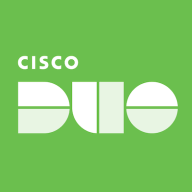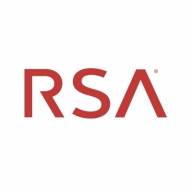Cisco Duo is a cloud-based identity security tool offering easy and wide-ranging access protection for users and devices worldwide. It assures identity-first security with clear visibility across multi-cloud, hybrid, and on-premises environments.
Cisco Duo provides robust multi-factor authentication and seamless integration capabilities with existing infrastructures. Appreciated for its stability and speed, it supports distributed workforces by securing VPN access, corporate networks, and cloud services. Duo’s comprehensive identity ecosystem supports easy deployment and management through a single-pane-of-glass management interface. It seamlessly merges with popular platforms like Active Directory and Office 365 across diverse hardware.
What are Cisco Duo’s Essential Features?
- Multi-Factor Authentication: Offers secure access with options like push notifications and hardware tokens.
- Seamless Integration: Easily fits with existing systems and third-party applications.
- User-Friendly Management: Provides centralized control with a single-pane-of-glass interface.
- Wide Compatibility: Supports broad applications and devices, enhancing security management.
- Stable and Fast: Reliable speed and intuitive interaction for users across platforms.
What Benefits and ROI Can Cisco Duo Users Expect?
- Enhanced Security: Increases protection with versatile MFA options for critical resources.
- Ease of Use: Simplifies deployment and management with intuitive interfaces.
- Scalability: Adapts to growing needs with broad compatibility and integration support.
- Support for Distributed Workforces: Ensures secure remote access for teams anywhere.
Cisco Duo finds extensive applications across education, finance, retail, and government sectors by fortifying network and application access security. Organizations leverage it for its MFA capabilities, integrating with ERP systems, ensuring protected connectivity with VPN and cloud-based services, crucial in maintaining secure and efficient operations.
Fortinet FortiAuthenticator is the primary secure point of approved access into the Fortinet network, authorizing users, reviewing access permissions, and relaying the information to all Fortigate devices for comparison with identity-based protocols. Fortinet FortiAuthenticator is a top-ranked authorization and SSO solution.
Appropriate secure access is fundamental to every role in an enterprise ecosystem. It is an integral function of every organization to ensure that every access and privilege is secure and to mitigate any possible risk to an organization. Approved users should only have access to the necessary information when they need it, from the appropriate location(s) to safeguard an organization's security at all times.
Fortinet FortiAuthenticator is available as an appliance, virtual machine, or in the cloud.
Fortinet FortiAuthenticator Methods
-
FSSO: FortiAuthenticator Single sign-on user will easily identify users and assign role or group access based on preset identity-based protocols. FortiAuthenticator integrates well with third-party LDAP or active directories, is very flexible, and combines these methods to provide effective security.
-
Active Directory Polling: Active directory access is securely identified by consistent polling of domain controllers. As users log in, username, IP address, and other details are logged into the database and can be shared across devices as directed by FortiAuthenticator protocols.
-
FortiAuthenticator Portal and Widgets: If a user system does not support AP polling, or for other reasons it is not feasible, FortiAuthenticator offers a unique secure authentication portal. Users can be manually authenticated and, to diminish the effect of numerous logins, an intuitive set of widgets is available to integrate into an organization's ecosystem that will automatically grant access to users when they access the organization's intranet homepage.
-
RADIUS Accounting Login: For organizations that use RADIUS authentication, RADIUS Accounting is available for user identification. This process will prompt user access information (IP and group, etc.) and eliminate the need for multiple levels of authentication.
Reviews from Real Users
Ernesto C., Presales Engineer at a comms service provider, shares,
”Key Features and Benefits
- Two-factor/OTP Authentication with FortiToken: Enforce user-based policies. Fortitoken is available in soft and hard versions for flexible usage. Most Valuable in Mobile Phones App for OTP.
- Integration with LDAP and AD: This solution integrates with existing enterprise systems and technologies from diverse vendors of user information management systems.
- LPAD/AD/RADIUS/SYSLOG/KERBEROS/REST API/FSSO and Web Portals: There is flexible integration with these services.
- It is usable in network, WAN, wireless, and VPN Scenarios.
- The domain and guest-users support are good.”
Ibrahim M., Senior Network & Security Engineer at a tech services company, relates, "The initial setup is a valuable point on Fortinet products. Most of the time, putting the theory into practice on the devices is quite friendly and straightforward. As long as you can read English you can find your way around the solution and make it work. This is a high value point on Fortinet - the way everything is laid out in the web UI is user-friendly and quite straightforward. The UI is quite simple."
RSA Adaptive Authentication is a risk-based two-factor authentication solution providing cost-effective protection for an entire user base. Adaptive Authentication secures online portals, SSL VPNs, and web access management portals for different types of organizations in the healthcare, insurance, enterprise, government, financial services, and other industries. Based on the transparent two-factor authentication technology, Adaptive Authentication works behind the scenes to authenticate end users and transactions based on individual end user and device profiles. In addition, Adaptive Authentication uses the RSA Risk Engine to estimate the level of risk for the specific activity and uses information collected from the RSAeFraudNetwork (a cross-organization, cross-application, cross-border online fraud network) to identify fraudulent activities. The Policy Manager determines what actions must be performed, depending on the risk score and other parameters.




